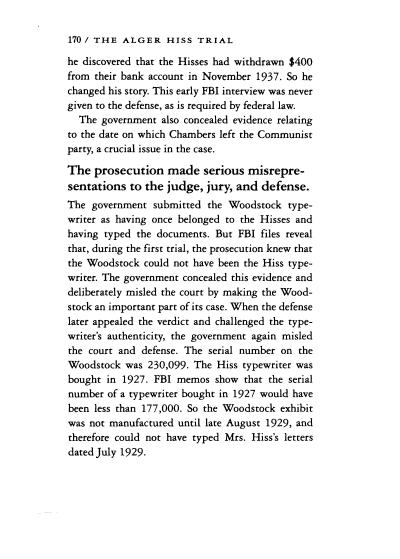|
170 / THE ALGER HISS TRIAL
he discovered that the Hisses had withdrawn $400 from their bank account in November 1937. So he changed his story. This early FBI interview was never given to the defense, as is required by federal law.
The government also concealed evidence relating to the date on which Chambers left the Communist party, a crucial issue in the case.
The prosecution made serious misrepresentations to the judge, jury, and defense.
The government submitted the Woodstock typewriter as having once belonged to the Hisses and having typed the documents. But FBI files reveal that, during the first trial, the prosecution knew that the Woodstock could not have been the Hiss typewriter. The government concealed this evidence and deliberately misled the court by making the Wood-stock an important part of its case. When the defense later appealed the verdict and challenged the typewriter's authenticity, the government again misled the court and defense. The serial number on the Woodstock was 230,099. The Hiss typewriter was bought in 1927. FBI memos show that the serial number of a typewriter bought in 1927 would have been less than 177,000. So the Woodstock exhibit was not manufactured until late August 1929, and therefore could not have typed Mrs. Hiss's letters dated July 1929.
|

